We recently introduced Project Kenko 01 for testing write endurance of modern SSDs. We are using two Samsung 750 EVO 120GB SSDs with 35TBW per their specs and have them in two different configurations. The first we are running a SSD write endurance test across the entire SSD area. The second we pre-filled the drive with 90GB of static data and are running the SSD write endurance test across the remaining area. At only 2TB written we were already seeing the impacts of the writes.
Project Kenko 01: Samsung 750 EVOs at 2TB written
The project is quite a bit further along but we wanted to show the impacts of writing to these drives even with only 2TB written. At even this paltry write figure we are starting to see a divergence in results between our drive that started with 90GB of pre-filled data and our drive where no static data is present.
Here is a quick comparison of the SMART attribute for wear leveling:
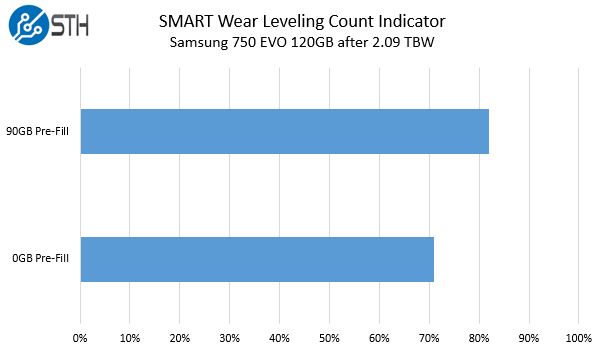
What one can clearly see is that the drive that is writing across the entire NAND pool is also seeing a rapid decrease in its wear leveling indicator. Here is what that drive looked like in hdsentinel:
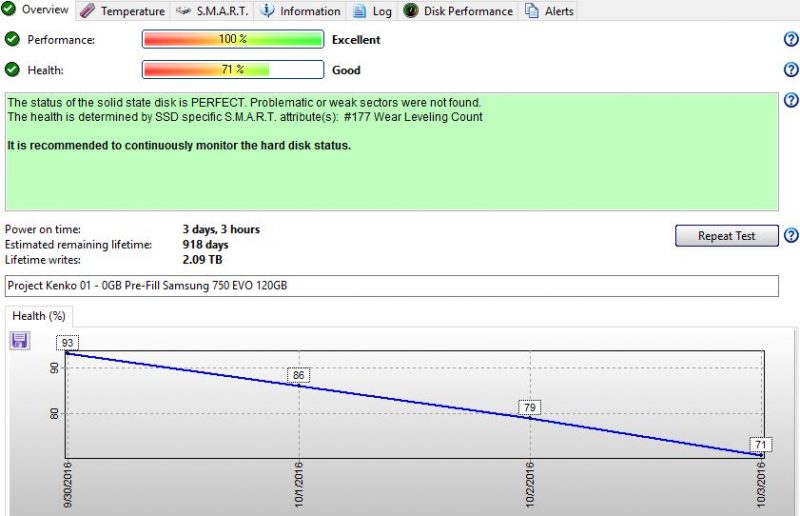
The impact here is that with the same amount of data written, we have approximately 38% higher SMART reported wear leveling on the 0GB pre-fill drive. That is a significant delta. It is also much faster than we would expect with a 35TBW endurance rating. At the current rate with 2.09TB written we would project the wear leveling count SMART attribute to approach zero at the following write levels:
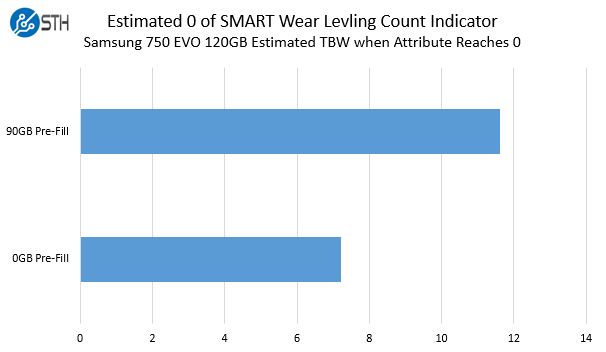
We did not have any reallocated sectors on either drive. In future updates, we will keep a count of what is happening like we are doing with the wear leveling count attribute. The wear indicator seems to suggest that there is not even leveling across the two drives. As a result, we are interested to see what is driving this delta. We may see reallocated sectors on the drive with no pre-filled static data since the SMART wear leveling count attribute is dropping significantly faster.
Fun Performance Anecdote
Performance under heavy workloads is not great with the Samsung 750 EVO 120GB. We tried a third drive (our initial testing SSD for setup purposes) as a ZFS ZIL device in a 10Gb NAS just to see what would happen. Please do note, in our Top Picks for FreeNAS ZIL/ SLOG Drives we do explain why we would never consider the Samsung 750 EVO as a ZIL device and have many better options. Still, it was an easy way to see what would happen to the drives under a heavy workload.
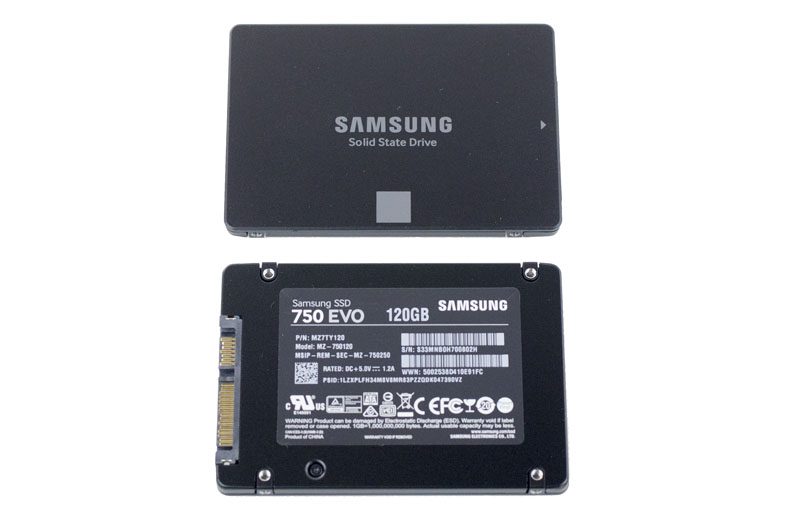
The particular NAS went from running over 800MB/s using an Intel DC P3700 to around 200MB/s for the first few minutes using the Samsung 750 EVO. By the 30 minute mark, the Samsung 750 EVOs brought writes down to under 16MB/s. By one hour in this figure fell to 12MB/s. Given, we did pay about ten times the amount for the Intel DC P3700 400GB SSD, and it has features like power-loss protection making it a top pick for that type of application. It does show that all SSDs are not created equal and even a several-year-old SSD can perform 50x faster if selected properly for the workload. The Samsung 750 EVO will likely never be used as a ZIL device in a NAS server since it is client focused. It is still an interesting real-world performance data point around how read-optimized these drives are.
Our write endurance testing of our two drives is taking considerably longer than we expected as the sustained write speeds are well below our estimates. As a reminder, these drives are targeted at low-end consumer workstations that will never see heavy write workloads.

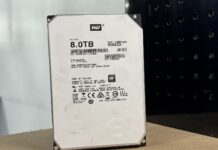


The normal 850 EVO is quite price competitive so Would be nice to know how it behaves as a ZIL drive. The 850 PRO at least in EU is a lot more expensive.
Neither the 850 EVO nor the 850 Pro we would recommend as a ZIL drive. They do not have power loss protection.
The SM863 or PM863 would be more suitable.
Hum in enterprise ssd world i think the intel are way better than the samsung.
And i just wait the possibility to use pmc flashtec nv1616 for ZIL.
Just imagine a zfs array with 2 nv1616 for zil and 46 intel dc p3600 2.5″ nvme
With compression you can made a box of 100Tb usable, with probably more than 500k iops for less than 100k $
We do recommend the S3700 over the PM863’s but we also rate the P3700 highly for ZIL SSDs.
Also we are already at sub $30K for 48TB raw and 3 million IOPS https://www.servethehome.com/going-fast-inexpensively-48tb-of-near-sata-pricing-nvme-ssds/
oh nice i didn’t see this one.
Which OS are you using for that onne?
That was done simply using Windows Server 2012 R2. Nothing fancy there.
What is the write speed difference on both testing SSDs? Has SSD wearnes some impact on write speed?
I think it’s kind of fraudulent to sell drives that acknowledge writes that aren’t durable, then charge extra for drives that comply with the standard they purport to support (SATA / NVMe etc.)